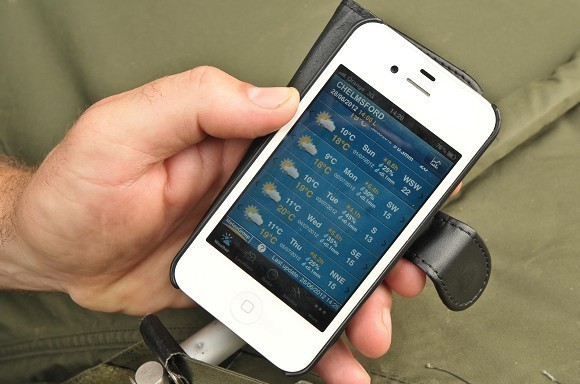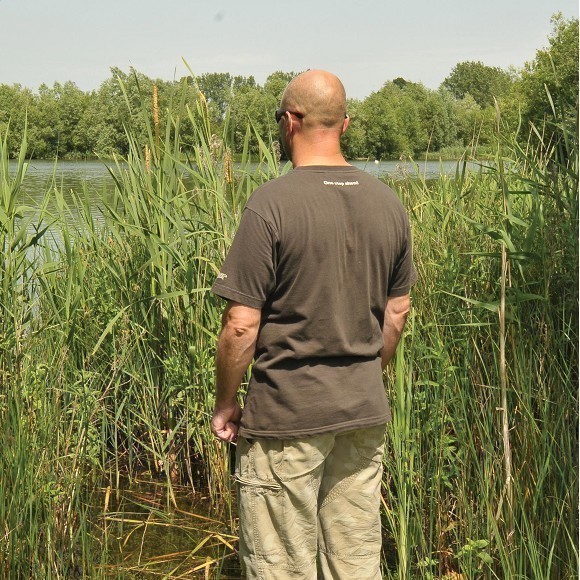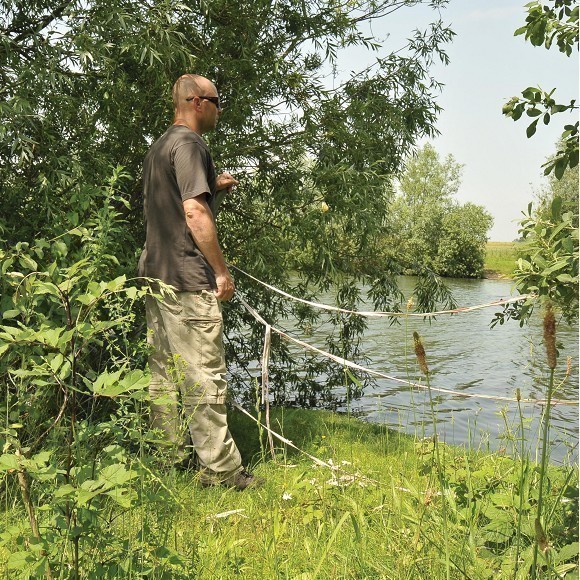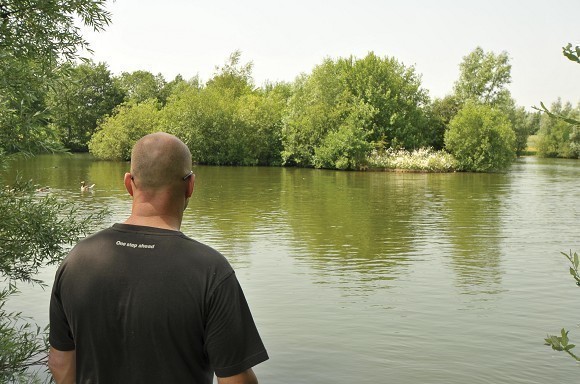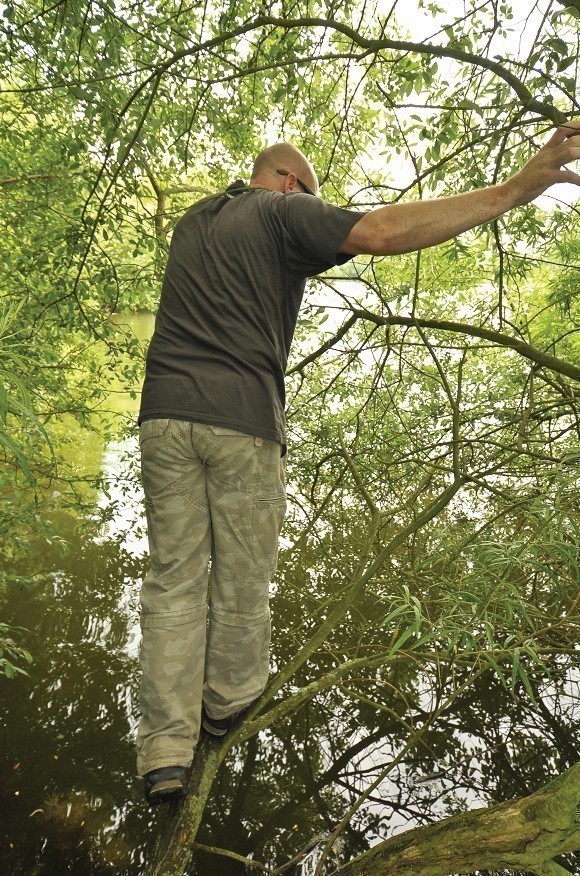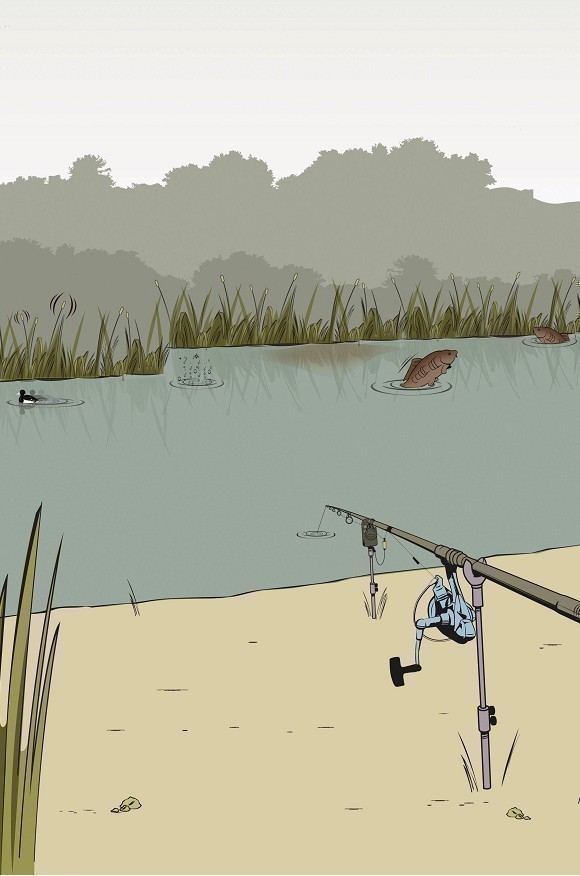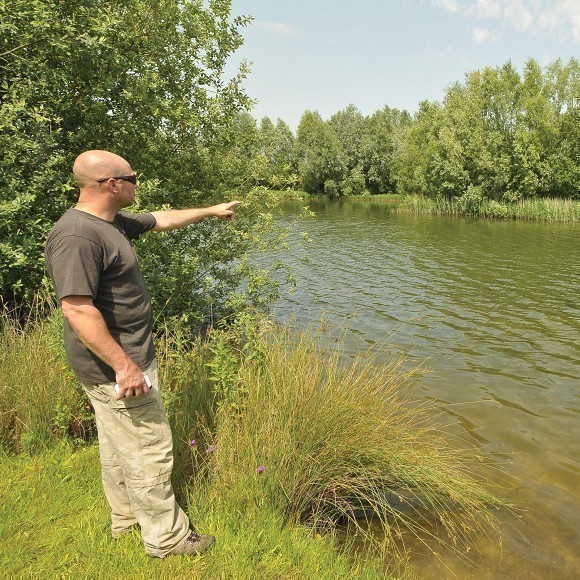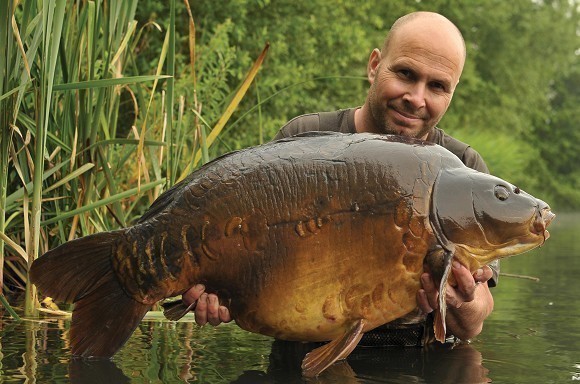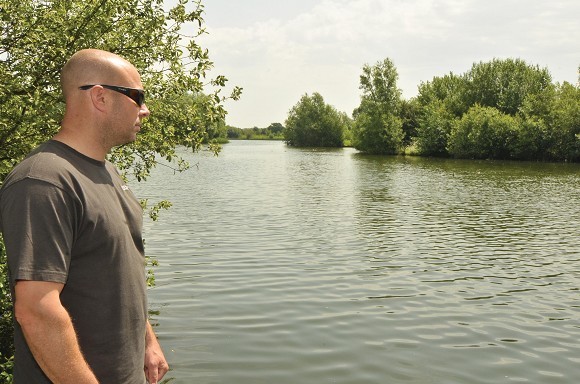
Everything you need to know about watercraft
Seasoned carper Dave Levy looks at one of the most important aspects to being a successful carp angler
These days you can walk into most tackle shops and buy just about anything you want straight off the shelf, from ready-made hooklinks to any flavour of boilie, but there’s one very important aspect you can’t buy and it is so important that if you don’t have it, then your angling will never amount to more than camping with the odd carp thrown in for good measure. This very essential ingredient is called watercraft, but what exactly is it?
Watercraft is an understanding for the environment that you go fishing in. The weather and how it makes the carp act, the reasons carp do what they do and when. So in this article I’ll give you some good tips on what to look for and where you should expect to find the carp within your lake depending on certain situations.
1. Weather
So what do I look for when checking the weather for good conditions? Simple: the wind. The short answer as to why carp follow wind is because it blows the surface water in one direction which causes the water below to go in the other. The carp naturally swim into the flow of water and end up at the bank where the wind is blowing to.
If it’s a southwest wind I know this is a warm wind and the carp are most likely to follow it, whereas northeast winds are cold and carp often move to the back of this to be in more comfortable water. In terms of wind strength, I would count anything over 15mph on a weather report to be fairly strong.
When fishing your chosen water, use a compass to find out where the north bank of your lake is and then from here you can work out the wind directions with ease. This means when you’re at home or work you can check the weather and work out where the carp are likely to be on your water that day.
So why is this of such importance? Location of the carp, even when you’re not there, will help to build a picture of what’s happening down at the lake.
Pressure is the next factor of weather. When there is cloud cover in the sky, this is known as low pressure and when it’s clear and you can see the stars at night or have a bright blue sky, this is high pressure. I have a barometer and this is an instrument that reads air pressure. To keep it simple, anything over 1000 is high and anything below is low.
So how does air pressure affect your fishing? Well, as I’ve just stated, low air pressure indicates cloud cover and normally windy conditions which is great carp fishing weather and the lack of pressure on the carp in the water means they are more willing to visit the bottom. High air pressure can mean clear skies and this would mean sunny days with chilly nights – not so good for carp fishing but remember the floater tackle as the carp are more likely to be in the upper layers in this high pressure and sunshine. Understanding weather will help you locate the carp.
2. Water
If the lake you’re fishing has clear water, then not only can you see the carp easier but you can also see things like mud being kicked up off the bottom where they are feeding so cloudy water is a key sign to finding where they are. If the water isn’t very clear then try to look for signs like bubbling or flat spots on the wind, fish crashing out, reeds or lily pads moving. For every movement in water there is a reaction, making it very hard for the carp to do anything without being seen, but if you’re not looking, you’re not going to spot the signs.
3. Margins
The margin of any lake is the biggest feature in it. It’s on very rare occasions that I don’t have at least one or even two baits in margins, particularly in the summer months when the water is warm. So why do carp love the margins? Well, for starters it’s a pathway round the lake and also the most regularly baited spot. Think about it: at the end of every session, when you reel in, the first thing most of us do is pull the hookbait off and chuck it in the margin. Particularly on day ticket venues this can be a great area to fish, as the carp find a regular food source here. Also, don’t overlook the far margins, casting across to reedbeds or bankside trees and snags can be a devastating way to fish and you can bait very easily.
4. Islands
Again, islands in any lake are an obvious feature and will see a lot of anglers’ baits. This, along with good bankside cover, makes them really good areas to fish to. They also have the added bonus of being a good marker for accurate baiting. They are natural holding areas for carp as they normally have plenty of hiding places and gravel shelves for the carp to rub off any unwanted critters. I found that carp really like islands in the spring, especially after a winter of sitting about and getting covered in leeches. They can use the island’s margins to rub and scratch these off. They are also a great bet if you really can’t find the carp anywhere else.
5. Snags
This brings me onto snags. Carp just love to sit about in snags and this can mean they are much more likely to feed as they feel much safer within said un-fishable area. I do fish up to snags but I have to say put the carp first. Don’t fish a snag if there’s no chance of landing them as the last thing you want to do is leave a carp snagged up.
6. What to look for... how to spot a carp
Reeds twitching: Keep an eye on these because if the fish are present inside of them then you will see the reeds twitching as they swim in and out.
Bubbling: Bubbling is a sure sign of a feeding fish. This is showing that a fish is routing around on the lakebed looking for food.
Clouded water: Clouded water is something you should never ignore. This is a sure sign that carp are routing around with gusto on the lakebed.
Head and shouldering: This is something you will only see if you are watching the water as they are often completely silent when they do this. This activity is often a feeding carp coming up to clean its gills out.
Water birds spooking: Keep an eye on the birdlife, especially in shallower water. You will often find that the birdlife will spook or completely change direction if there are carp in the vicinity.
Rolling: They will often come up to the surface and roll before going back down into the depths. This doesn’t always mean they are feeding but it does show you where they are.
7. Features
Here I’m talking about gravel bars and silt gullies. The two go hand-in-hand because if you have a gravel bar at the sides you’ll find silt. Bars are good areas to find carp as they’re often used as patrol routes. If you have a lot of open water a gravel bar can be just the feature you are looking for. I once fished a water a few years back which was very open. I kept seeing carp in one area of the lake and after a plumb about there was a small bar about three-feet across and ten-feet long. Up until then I’d only caught one fish in five nights, but once I located that bar I had seven in one 24hr session. They just wanted to be around that bar. Again, they’re not just feeding but using it as a patrol route and to scratch themselves on. The reason it made such a good fishing spot was the location was right.
Fishing off the front of a bar or down the back into silt can be very good, as these are the areas where the natural food will thrive or baits roll down to. Just be aware that they can also be devoid of food and have stinking dead silt in them so don’t always focus too much with these types of areas.
Open water itself can be a feature. If the centre of the lake is a very long cast then carp can often use this as a safe area, just like they would a snag, so getting that extra few yards on the cast could be the difference you need to catch.
8. Summary
So a quick summary of watercraft. Look for the carp when you get to the lake. I nearly always walk right around as you never know what’s around the next corner. Use your ears; if a carp jumps you’ll hear it and be prepared to move to a new swim. Check the weather reports leading up to your session to give yourself a little edge; the weather will tell you where to head for. Don’t overlook the margins; carp love them and finally, remember, “Ten minutes in the right spot is better than 24hrs in the wrong one.”





